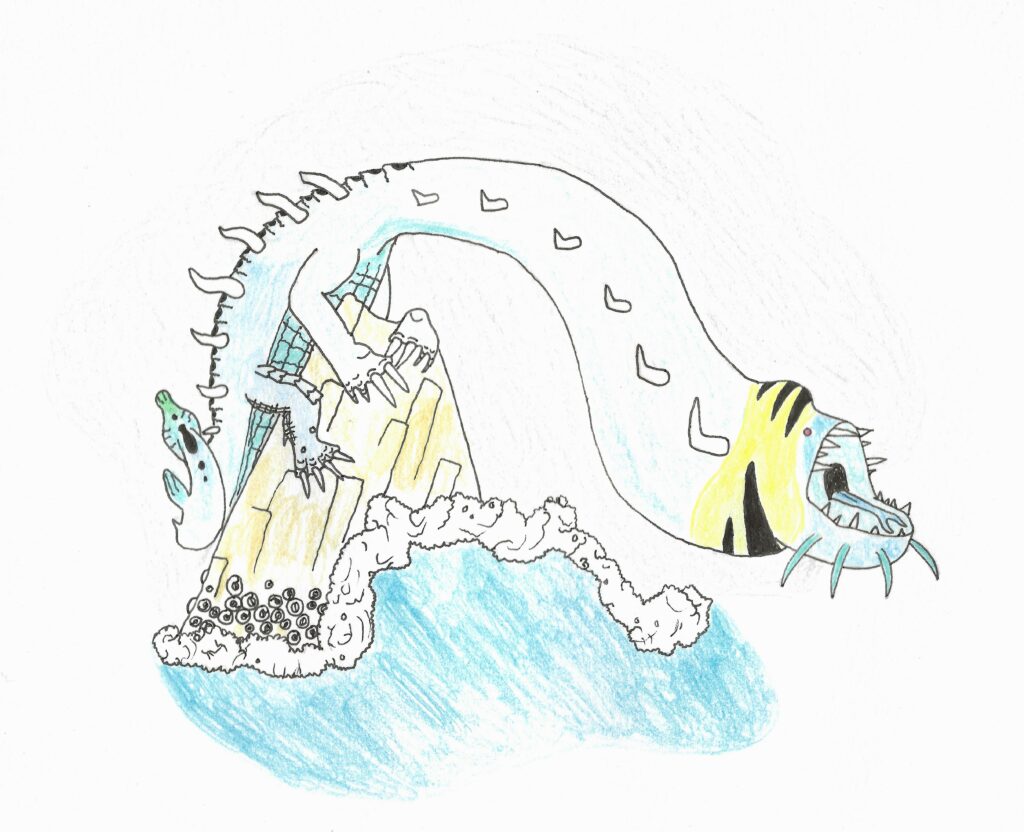
World: Any
Diet: Fish, occasional carrion
Length: 37’10”
Lifespan: 300 years
Habitat: Tropical coastal waters, preference for reefs
Activity Cycle: Diurnal
Only the stormiest of tropical coasts can shock these creatures into life. When the watery chaos falls through the sky, if it passes through a storm cloud on its way to the ocean, it becomes charged and becomes a larval tanystormus. The resulting creature grows quickly, and soon becomes a 40-foot amphibious predator.
Tanystormus are slow both on land and in water. They mostly don’t swim at all, simply walking on the sea floor and climbing coral structures. From these vantage points, they use their long necks, composing half of their overall length, to grab out at passing fish. Their preference is moderately-sized prey, including small sharks, but they can also use an electric pulse to stun larger schools and devour many animals at once. On land, they scour the beaches for washed-up animals.
Their characteristic electrical attacks are produced by special muscles in their neck, which constantly build up and store a charge. Their main use is an underwater pulse, used to stun prey or deter larger predators. On land, they can charge the spines on their neck with electricity and slam with them, or spit a ball of lightning.
Tanystormus are exclusively found in tropical climates, with a preference for atolls and reefs. This is not just because of the warmth, but for the storms that the warm waters whip up. While they produce their own electricity, they enjoy “tasting” lightning, and insist that taking in wild electricity helps them keep their own “product” “pure”.
Lairs:
Tanystormus can squeeze through surprisingly narrow spaces due to loose, bendable joints in their skull and limbs, and as such their lairs can be within quite small gaps in the reefs and cliffsides they prefer. Entrances are almost universally underwater, but if this isn’t possible, they will be set off the ground so that intruders must climb to reach them.
Internally, stormus prefer their lairs to have multiple air-exposed ledges for climbing and storing treasure (their favorite is conductive metal) and at least some water at the bottom. Tanystormus mate for life, and the pair will raise their young children in the safety of the lair for over a decade before they are capable of living on their own.
